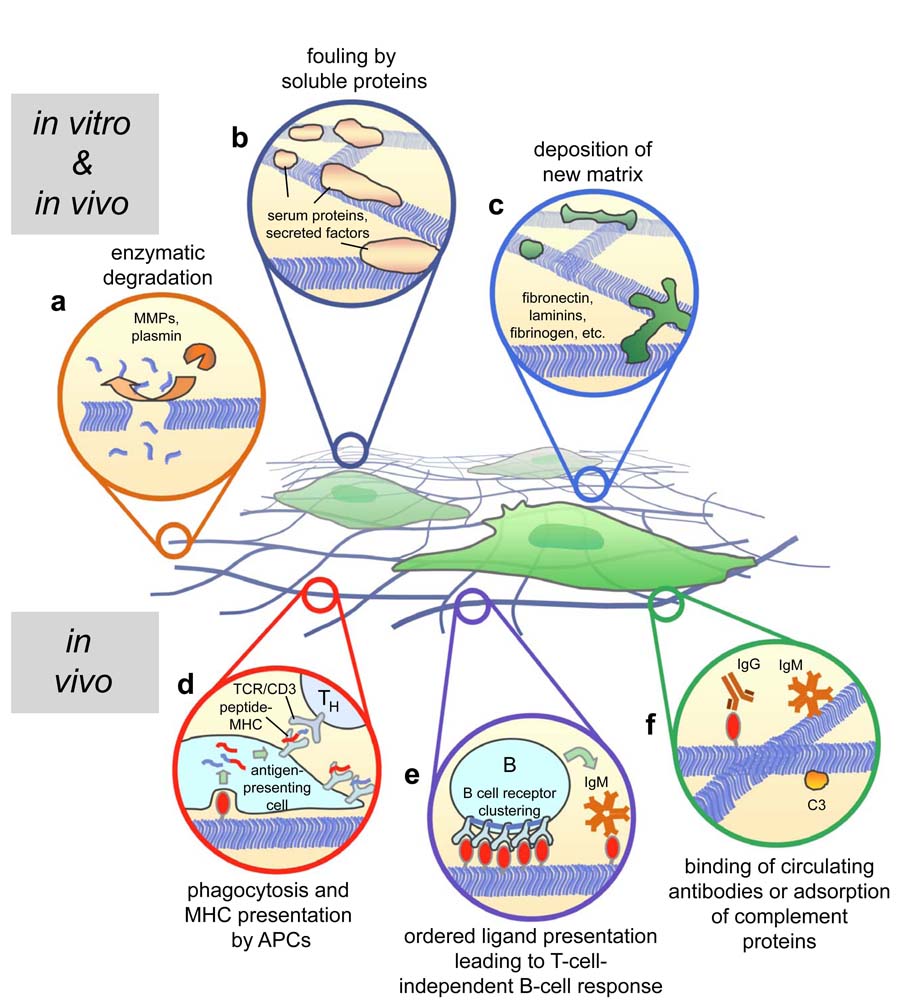Figure 3.
Biological mechanisms that can modify self-assembling biomaterials construction in vitro (a–c) and in vivo (a–f). Processes at work in both environments include enzymatic degradation (a), fouling by serum-derived or other soluble proteins (b), and the deposition of new extracellular matrix by cells in contact with the material (c). Processes at work in vivo include phagocytosis of the matrix by antigen-presenting cells (APCs) and presentation in the MHC to potentially stimulate T-cell-dependent immune responses (d, note, many accessory and co-stimulatory proteins are not shown for simplicity), T-independent IgM responses induced by multivalent ligand display and B cell receptor clustering (e), and the binding of low-affinity circulating antibodies or complement proteins (f).

